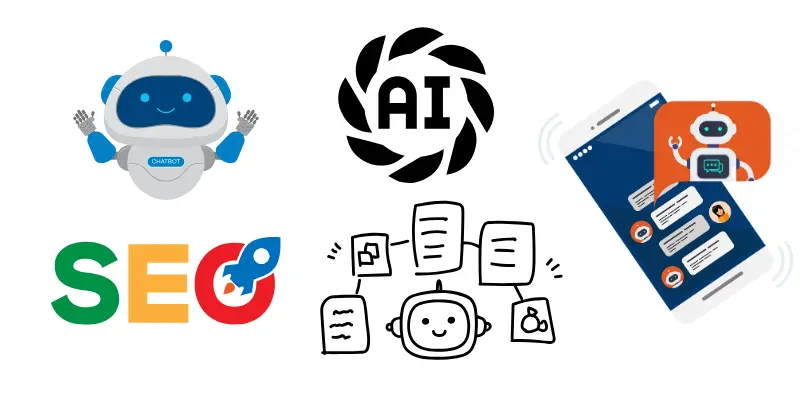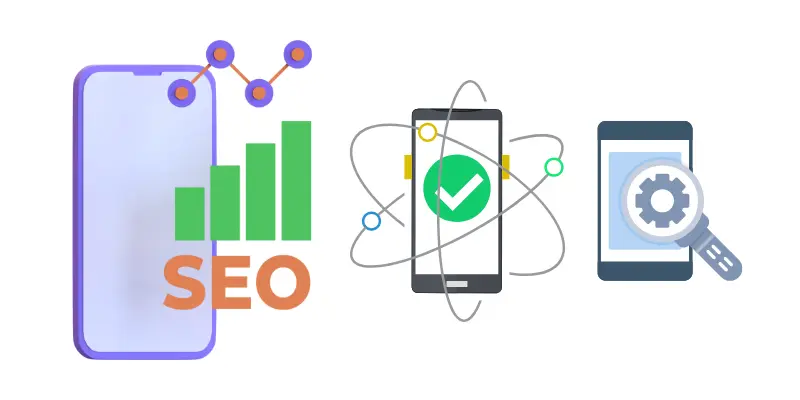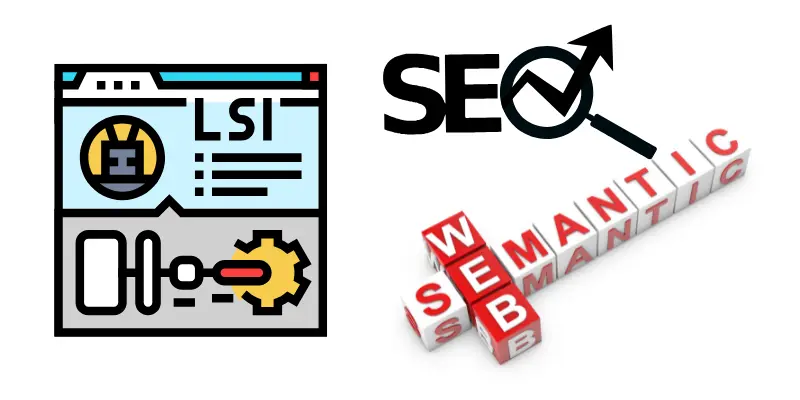Multimodal Search SEO: How to Optimize for the Future of Visual & Voice Search
Published: 7 Jul 2025
The way people search is evolving fast. Today, users no longer rely on just typing keywords into a search bar. Instead, they’re snapping pictures, asking questions out loud, and even combining images with spoken commands.
This is the era of multimodal search—where users interact with search engines using a combination of text, images, voice, video, and contextual data. Google Lens, Bing Visual Search, TikTok’s search bar, and ChatGPT’s image recognition are all part of this shift.
For digital marketers, bloggers, and content creators, optimizing for this new behavior isn’t just a trend—it’s a necessity.
In this comprehensive guide, you’ll learn:
- What multimodal search is and how it works
- Why it’s reshaping traditional SEO
- The key elements that influence discoverability across formats
- How to optimize your content for voice, image, video, and hybrid search inputs
- What tools, schemas, and future trends you need to stay competitive
Let’s get started by understanding the core concept.
On This Page
What Is Multimodal Search? (And How Is It Changing SEO?)
Multimodal search allows users to search using multiple input types at once—such as text + image, or voice + visual context—to get more accurate and intuitive results.

Instead of typing “best red sneakers under $50,” a user can:
- Take a photo of a sneaker,
- Speak or type, “Find this in red under $50,” and
- Get personalized results instantly.
Platforms like Google Lens, Pinterest Lens, YouTube voice commands, and ChatGPT’s vision mode are real-world examples of this technology in action.
Traditional vs. Multimodal Search 🔍
| Feature | Traditional Search | Multimodal Search |
|---|---|---|
| Input Type | Text | Text, Image, Voice, Video |
| Search Intent | Keyword-based | Contextual, Visual, Semantic |
| Search Engines | Google, Bing | Google Lens, SGE, Gemini, ChatGPT |
| Result Format | Blue links | Rich media, AI answers, carousels |
| SEO Optimization | Keywords, Links | Schema, Entities, Media Tags |
Why Is Multimodal Search Important for SEO in 2025?

- User Experience Is Multisensory
People expect faster, more visual, and voice-friendly results. If your content isn’t ready for this format, you’re missing visibility. - Google’s Algorithms Are Multimodal-Aware
With the rise of SGE (Search Generative Experience), Gemini, and MUM (Multitask Unified Model), Google is analyzing content across multiple modes—not just plain text. - Visual & Voice Search = Higher Engagement
Voice queries are conversational and long-tail. Visual search converts better for product-based, how-to, and location-based searches.
Real-World Examples of Multimodal Search:
- Ecommerce: A user uploads a photo of furniture and asks “Find this table in black.” Google finds product listings with matching visual features + colors + price range.
- Travel: A tourist takes a photo of a landmark and asks “What’s this place and when is it open?” — Google returns the location, hours, reviews, and map.
- How-To Searches: A user shows a leaky pipe and says “How do I fix this?” — AI returns relevant videos and step-by-step guides based on visual input.
Key Elements That Influence Multimodal SEO
To make your content discoverable in a multimodal search environment, you need more than just keywords. You need to structure, format, and tag your content so that AI-powered search engines can understand, interpret, and rank it across multiple input types.
Here’s how to optimize your content step by step:
1. Image SEO: Optimization for Visual Discovery
Google Lens and Pinterest Lens rely heavily on image understanding. If your images are not properly optimized, you miss out on a massive visibility channel.

✅ Best Practices:
- Use descriptive file names:
red-suede-running-shoes.jpg - Add clear, keyword-rich alt text:
Red suede running shoes for women under $50 - Surround images with contextual text: Google uses nearby content to infer meaning
- Use original, high-resolution visuals over stock images
📌 Learn more with our Image Optimization Checklist.
2. Video SEO: Rank for Voice, Visual, and Rich Snippets
Search engines now surface video content for informational queries, product demos, tutorials, and how-to guides.
✅ Best Practices:
- Add transcripts and closed captions
- Use VideoObject schema (JSON-LD format)
- Embed videos from YouTube with timestamps (Google loves these!)
- Optimize your video titles + descriptions like blog posts
🧠 Tip: Use YouTube Chapters and descriptive thumbnails for better UX.
3. Voice SEO: Targeting Conversational Queries
With smart speakers and voice search on mobile, optimizing for spoken queries is crucial.
✅ Best Practices:
- Use long-tail, question-based phrases (e.g., “How do I optimize images for Google Lens?”)
- Add FAQ sections with clear, conversational answers
- Use Speakable schema to mark up key sections of your content
4. Structured Data: Schema Is the Backbone of Multimodal Search
Schema markup helps search engines understand your content type, structure, and context. It’s critical for rich results across formats.
✅ Key Schema Types for Multimodal SEO:
ImageObject– for visual assetsVideoObject– for video embedsHowTo– for instructional contentFAQPage– for Q&A sectionsProduct– for eCommerce and reviewsSpeakable– for voice assistants
🧩 Tool Tip: Use Google’s Rich Results Test to verify schema implementation.
5. Text + Context: Help AI Connect the Dots
While images and videos are critical, the surrounding text remains essential for semantic understanding.
✅ Best Practices:
- Explain your visuals in words: “As shown above, this red suede shoe features a lightweight sole…”
- Use internal links to related blog posts, FAQs, and supporting resources
- Structure content with clear H2/H3 headings and bulleted lists for easy parsing
6. Accessibility: The Overlooked Multimodal SEO Factor
Accessible content (ADA-compliant) often aligns perfectly with multimodal optimization.
✅ Tips:
- Add alt text, ARIA labels, and semantic HTML
- Ensure contrast, readable font size, and keyboard navigation
- Provide audio descriptions or text equivalents for visuals
7. Mobile-First UX Still Matters
Multimodal search often begins on mobile devices, so a responsive, fast-loading site is non-negotiable.

✅ Technical Checks:
- Use lazy loading for images/videos
- Optimize for Core Web Vitals
- Test with Google Mobile-Friendly Tool
📌 Related Reading: Complete Technical SEO Guide
Tools For Multimodal SEO
Now that you understand what to optimize—images, videos, voice content, and structure—it’s time to put that knowledge into action.
Here are the best tools, methods, and tracking tips for implementing multimodal SEO successfully.
These tools will make it easier to optimize your content across formats and ensure you’re compliant with modern search engine expectations.
📷 Image Optimization Tools
- TinyPNG / ShortPixel – Compress images without quality loss
- Squoosh – Google’s open-source image optimizer
- Image SEO Tool – Analyzes file name, alt text, and captions
🎥 Video Optimization Tools
- YouTube Studio – Add transcripts, chapters, and keyword-rich titles
- Lumen5 / Pictory – Convert blog content into engaging videos
- VidIQ / TubeBuddy – Research trending topics for video SEO
🗣 Voice Search Tools
- AnswerThePublic – Discover real voice-like queries
- AlsoAsked – See related conversational question maps
- Speakable Schema Generator – Free tools for marking up content
🔎 Structured Data & Schema Tools
- Schema Markup Generator (Merkle or TechnicalSEO.com)
- Google Rich Results Test – Validate schema implementation
- Schema.org – Explore full documentation for supported markup
How to Implement Multimodal Optimization (Step-by-Step)
Use this workflow to implement multimodal SEO strategies without being overwhelmed.
Step 1: Create Content That’s Multi-Input Friendly
- Write long-form, semantically rich content
- Add original visuals, how-to steps, infographics, and explainer videos
- Include FAQs and conversational headers to support voice SEO
Step 2: Tag & Structure Content with Schema
- Use plugins like Rank Math or Schema Pro (for WordPress)
- Add
ImageObject,VideoObject, andFAQPageschemas - Mark up “speakable” sections with
<speakable>schema (where applicable)
Step 3: Ensure Visual & Voice Discoverability
- Use unique, contextual alt text
- Name images and videos using keywords
- Add captions and transcripts to every media element
Step 4: Optimize Page Speed & Mobile UX
- Test with Google PageSpeed Insights
- Ensure all visual assets are lazy-loaded
- Avoid overlays and large pop-ups on mobile
How to Track Multimodal SEO Performance
You can’t improve what you don’t measure. Here’s how to track if your multimodal SEO efforts are paying off.
📊 Use Google Search Console (GSC)
- Go to Performance > Search Appearance to monitor video/FAQ rich results
- Check the Image tab in Search Types for Google Lens impressions
🧠 Use GA4 + Scroll Depth Tracking
- Track if users are interacting with multimedia elements
- Add event tracking for video plays or image clicks
🔍 Monitor Structured Data Health
- Use Rich Results Test or GSC Enhancements section
- Watch for warnings/errors in schema markup
🧩 Use Visual Search-Specific Tools
- Google Lens App: Test your content/image discoverability
- Pinterest Trends: Great for forecasting visual keyword ideas
✅ Quick Recap: Your Multimodal SEO Toolkit
| Type | Tools |
|---|---|
| Image SEO | TinyPNG, Image SEO Tool, Squoosh |
| Video SEO | YouTube Studio, Lumen5, VidIQ |
| Voice SEO | AnswerThePublic, Speakable Schema, AlsoAsked |
| Schema | Rank Math, Schema Pro, Rich Results Test |
| Tracking | GSC, GA4, Rich Results, Visual Testing Apps |
Future-Proofing Your SEO for the Multimodal Era
As search engines continue to evolve toward AI-first, multimodal, and conversational experiences, traditional SEO is no longer enough. To remain visible and competitive in 2025 and beyond, you must future-proof your content.
Here’s how to align with emerging trends and ensure your strategy grows alongside the web.
1. Entity-Based Optimization: Go Beyond Keywords
Modern search engines (like Google’s MUM and Gemini) don’t just match keywords—they understand entities, relationships, and context.

✅ What to Do:
- Use semantic terms and related topics around your main keyword
(e.g., for “schema markup,” also include “structured data,” “JSON-LD,” “rich snippets”) - Link to reputable sources (Google loves contextual relevance)
- Add internal links to clusters that support the topic
(e.g., link to Technical SEO Audit Guide when discussing crawlability or schema)
💡 Bonus Tip: Use Google’s NLP API demo or InLinks to see how your page is understood semantically.
2. Adapt to AI-Driven Search Interfaces
Search is moving from static result pages to AI-generated answers in Google’s SGE, Bing Copilot, and ChatGPT browsing.
✅ Optimization Tips:
- Structure content clearly with headers, bullets, and direct answers
- Add “People Also Ask”-style FAQs with conversational phrasing
- Format actionable guides that can be parsed into AI-generated summaries
- Use schema markup to signal list items, how-to steps, and FAQs
🔗 Explore our Beginner’s SEO Guide for foundational strategies.
3. Embrace Content Repurposing Across Formats
Multimodal SEO rewards content that lives beyond just text.
✅ Repurpose like this:
- Turn blog posts into infographics or carousels (great for visual search)
- Convert FAQs into voice-optimized Q&As for smart assistants
- Use how-to guides as YouTube shorts or step-by-step visuals
- Summarize articles as social posts for Google Discover or Pinterest
🛠 Tools to Help:
Canva – for infographics, web stories
Descript / Pictory – for video content
ChatGPT + DALL·E / Gemini – to generate visuals from your text
4. Local & Multilingual Multimodal SEO
If your audience is local or multilingual, multimodal optimization has even more impact.
✅ Local Optimization:
- Add geotags to images and videos
- Use LocalBusiness schema
- Create content that answers local voice queries: “Where can I buy this near me?”
✅ Multilingual Strategy:
- Offer alt text, video transcripts, and audio in other languages
- Use hreflang tags for region-specific versions of pages
5. Think Like a Search Agent, Not Just a Crawler
Search is no longer just about bots indexing pages. It’s about AI agents understanding tasks.
Google Gemini, OpenAI’s ChatGPT, and other platforms now act like digital assistants. They’ll pick and choose from your content to answer, explain, or suggest—not just rank.
✅ Prepare by:
- Summarizing clearly at the top of your pages
- Using zero-click formats (FAQs, TL;DRs, feature boxes)
- Feeding well-structured, accurate, trustworthy content that’s ready for AI to quote
✅ Final Takeaways: Make Multimodal SEO a Mindset
🔹 Search is no longer text-only—it’s visual, vocal, and contextual
🔹 Multimodal search rewards structured, media-rich, accessible content
🔹 Future SEO will favor creators who optimize for experience, not just crawlers
FAQs
1. What is multimodal SEO?
Multimodal SEO is the practice of optimizing content for search engines that process multiple input types like images, video, voice, and text.
2. Why does multimodal SEO matter in 2025?
With Google, Bing, and AI assistants using visual and voice search, optimizing beyond text is essential for visibility in a multimodal search environment.
3. How do I optimize images for multimodal search?
Use descriptive filenames, alt text, and schema markup like ImageObject. Ensure your images load fast and are surrounded by relevant text.
4. Is voice search optimization part of multimodal SEO?
Yes, targeting conversational queries, using FAQ sections, and applying speakable schema helps content rank for voice search devices.
5. What tools can I use for multimodal SEO?
Google Search Console, Schema Markup Generator, YouTube Studio, TinyPNG, and AnswerThePublic are great tools to start with.

- Be Respectful
- Stay Relevant
- Stay Positive
- True Feedback
- Encourage Discussion
- Avoid Spamming
- No Fake News
- Don't Copy-Paste
- No Personal Attacks

- Be Respectful
- Stay Relevant
- Stay Positive
- True Feedback
- Encourage Discussion
- Avoid Spamming
- No Fake News
- Don't Copy-Paste
- No Personal Attacks

